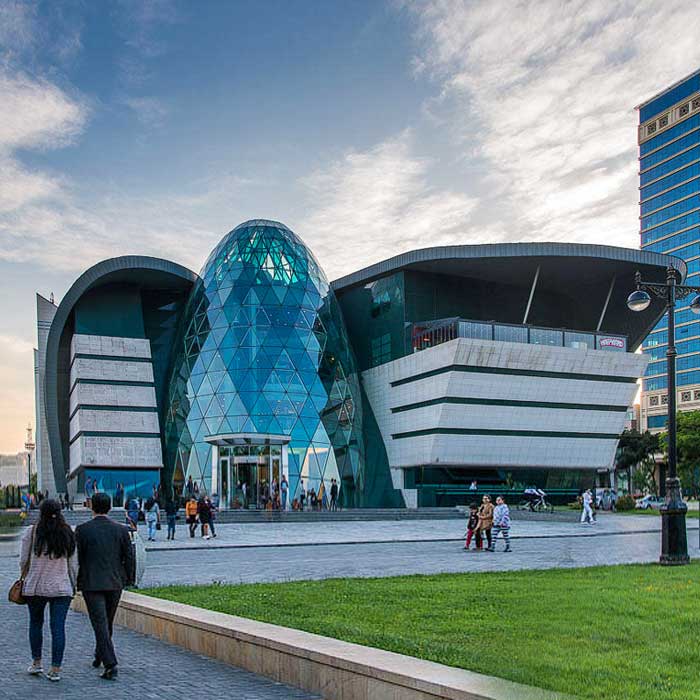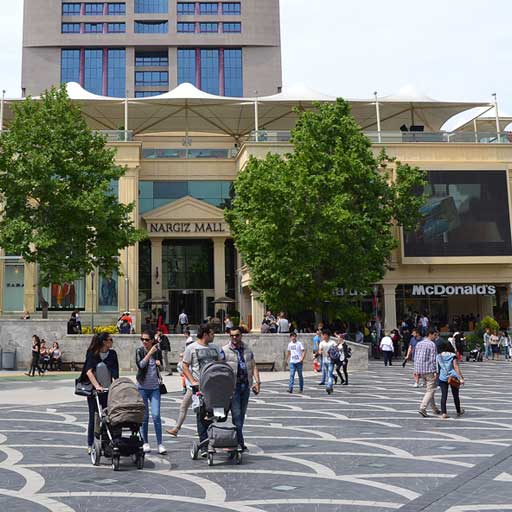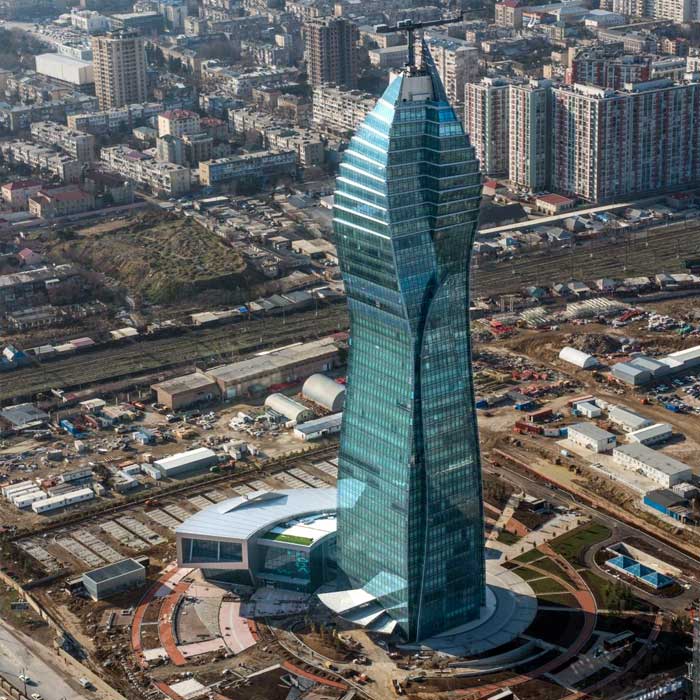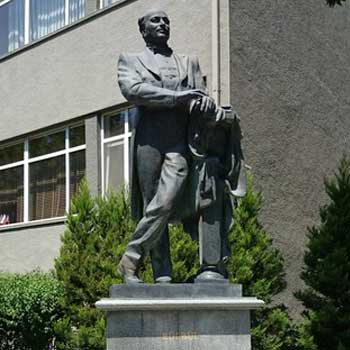
Statue of Aliaga Vahid was designed in 1990 by Rahib Hasanov and Natig Aliyev with the participation of the architect Sanan Salamzade. The authors skillfully recreated the image of the poet. The bronze of the monument, with its fine finish, is similar to carving on dark wood, which recalls one of the first occupations of Aliaga Vahid, who in his youth went at his father’s feet, becoming a wood carver.
This monument is unique, for there is nothing similar among the Baku, and in general Azerbaijani monuments. The monument is not as simple as the amazing Gazellekhan Vahid. The monument is made in the form of a huge head, as if growing out of the earth. Torso, neck, hair – the trunk and branches of the tree, and at the same time it is the intertwining of human figures.
There was an opinion, replicated in almost all sources, that these figures are characters of works by Vahid. However, it is worth taking a closer look, and it becomes clear that all these figures are symbols of the cyclical nature of life. Here is the birth of a child, here it is growing, here is his wedding, here are other events happening in the fate of any person, here is a wake …
And all this is located in a circle – from one cheek to the other. This brilliant idea came to the mind of the outstanding and very non-standard thinker sculptor Ragib Hasanov, who still has many interesting creations.
In general, the history of the creation of this monument is very interesting. It is established on voluntary donations of admirers of creativity Vahid. S. Salamzade was one of the initiators of the installation of this beautiful monument and one of the sponsors. Thanks to his perseverance, this idea was realized.
Here is how the press described the ceremony of the official opening of the monument: “The meeting was opened by the national poet of Azerbaijan Nabi Khazri. Talking about the creative and life path of the poet, he noted in particular: often we begin to respect the poet after his death. So it happened with the wonderful master of the word Aliaga Vahid. During his lifetime, he was not officially recognized, although he lived in the hearts of people as a truly national poet. But time, as you know, puts everything in its place. And now, a quarter of a century after his death, we gathered here to pay tribute to the memory of this great citizen of his Motherland.”
In early 2009 the monument was moved to a new place – now (04/2018) it is located near the “Icheri Sheher” metro station, behind the fortress wall.
A two-part feature film “Gazellekhan”, made in 1991 at the “Azerbaijanfilm” film studio (director and scriptwriter Shahmar Alekperov, operator Rafig Aliyev, artist Elbei Rzakuliyev, composers Ramiz and Nazim Mirishli). The role of Aliaga Vahid was played by Logman Kerimov.
Aliaga Vahid began to write and publish poems from the age of 18-19. In his satirical poem, Vahid revealed the society drawbacks, and condemned the prejudices, tyranny and injustice. The eminent poet’s first book was published under the title “The consequence of greed,” where he promoted the love of the motherland, hatred of the enemy, and a sense of confidence in victory. His ghazals were so popular among the people that he was nicknamed “Khan of the ghazals.” / Ghazelkhan.
His ghazals very suited the national music – Mugham, Azerbaijan’s unique musical and poetic phenomenon, recognizing as a masterpiece of UNESCO’s Oral and Intangible Heritage of Humanity. Many mughams were sung on his beautiful poets.
Despite he did not have a higher education, thanks to his extraordinary skill, Vahid proved that one becomes the writer not by deeds but by birth. He is assumed to be the founder of meykhana, the modern genre of ghazal, which was prohibited in Azerbaijan during the Soviet period.
The successor of the Fuzuli traditions, who was the classic of the national poetry, Vahid was an outstanding representative of the ghazal genre in the Azerbaijani literature.
The main attraction of his ghazals was that, alongside using classical features in his works, Vahid wrote his poems in a simple and easy manner, understandable for all readers, but at the same time full of philosophy.
His ghazals were distinguished with simplicity of poetic language, and beautiful sonorities and therefore they have occupied an important place in the repertoire of the national singers, who are called here as khanende.



















